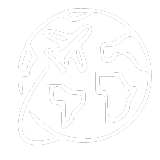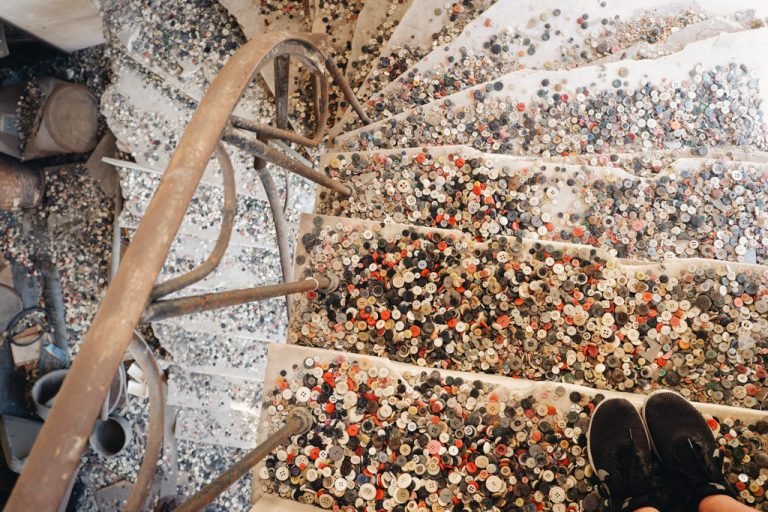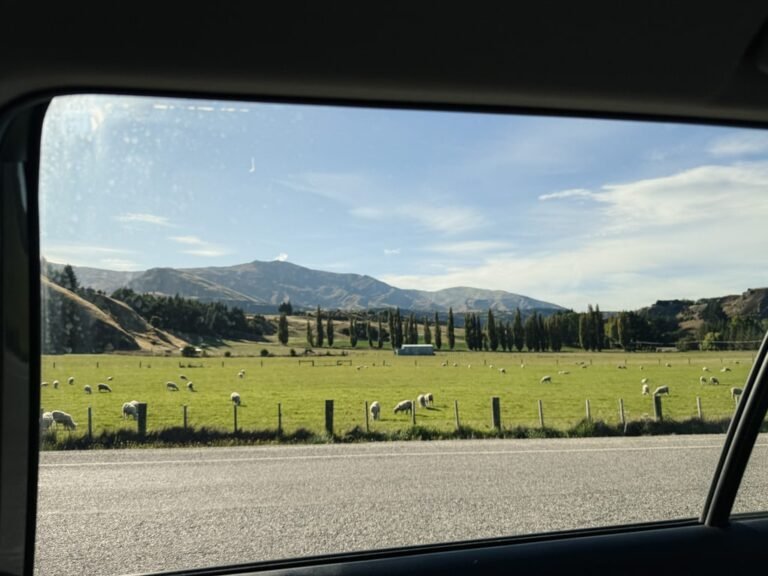This article may contain affiliate links. When you purchase something we recommend, we make a small commission. You don’t pay anything extra. 💘 For more details, check out our Terms of Use page.
Seoul was one of the places this year where I went full in with different experiences and activities.
From cooking classes (two of them), to a color analysis, and lots of different little trips and tours.
Making perfume was not on my list, but when I saw it on Get Your Guide, I thought it was a great couple activity.
You’ll leave with your own custom scent and actually learn a bit more about Korean culture in the process.
The class I took was located in Bukchon, right near Gyeongbokgung Palace, in one of the most charming little neighborhoods I walked through. The streets around the studio are filled with cafés, galleries, and traditional houses — it’s the kind of place that already feels like you’ve stepped into something special even before the class starts. You can combine it with your exploration.
Let’s get started
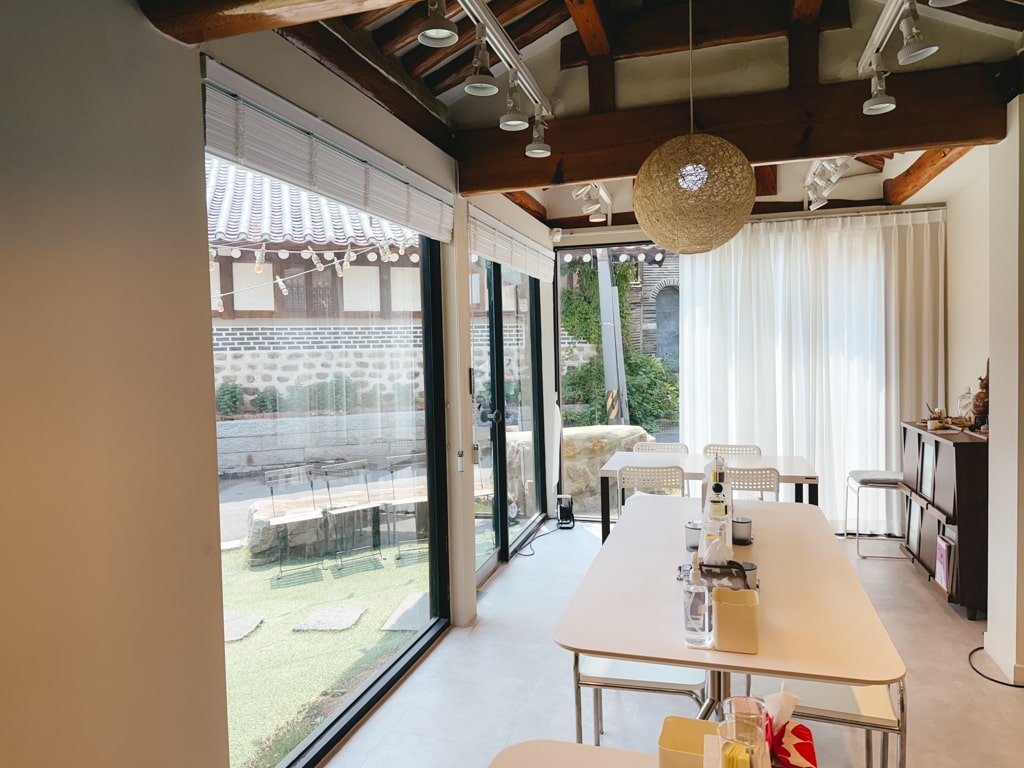
Table of Contents
ToggleHow It Works
We arrived and were seated at a shared table (one more guest walked in and joined us — very chill atmosphere overall). The instructor was warm, calm, and really informative. She laid out all the tools and materials and let us read through the handout first before starting the session.
Then she gave a brief intro to high, mid, and base notes, followed by a short presentation on how perfume is made. What stood out was how she tied it into Korean culture and scent preferences, giving the whole experience more depth than I expected.
After that, we got a full rundown of the available scents — over 30 individual oils, each with a tester and a short description. We used our worksheet to smell and rate each one, deciding how we felt about it and whether we wanted it in our final blend.
You basically get a description of what it is, smell the scent, then use your paper sheets to rate them.
It’s a bit overwhelming at first (there are so many!), but I trusted my instincts and gave each one a few seconds to settle. The scents change as they develop and my preferences definitely shifted as I went along.

One thing to note: all the scents are made from 100% natural essential oils. That also helped me understand why certain perfumes I love couldn’t be recreated here — many commercial scents use synthetic compounds that this studio avoids completely. A good reminder that natural and synthetic perfumes can be very different experiences. Also, if you are allergic to certain things or have sensitivities, you can select this experience.
Once we’d chosen our favorite base, mid, and top notes, we started blending. This part was honestly so fun. You get to try different combinations and test how the scents interact. Sometimes a combo that individually smells amazing totally falls flat, and sometimes a weird pairing just works.
We were also told that a lot of couples create similar base scents, so they had matching-but-different perfumes. So it is a unique couple experience that Koreans do.
At the end of the session, we tested the final blend on our skin and made small adjustments if needed. Then the instructor finalized the formula and we got to bottle it.
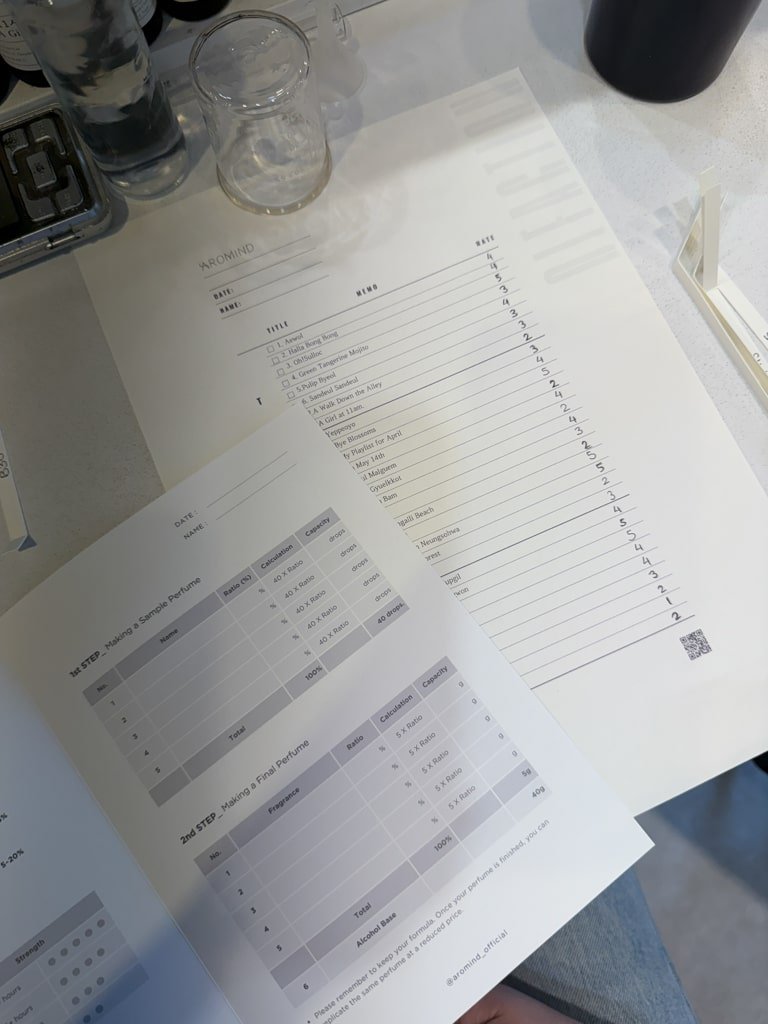
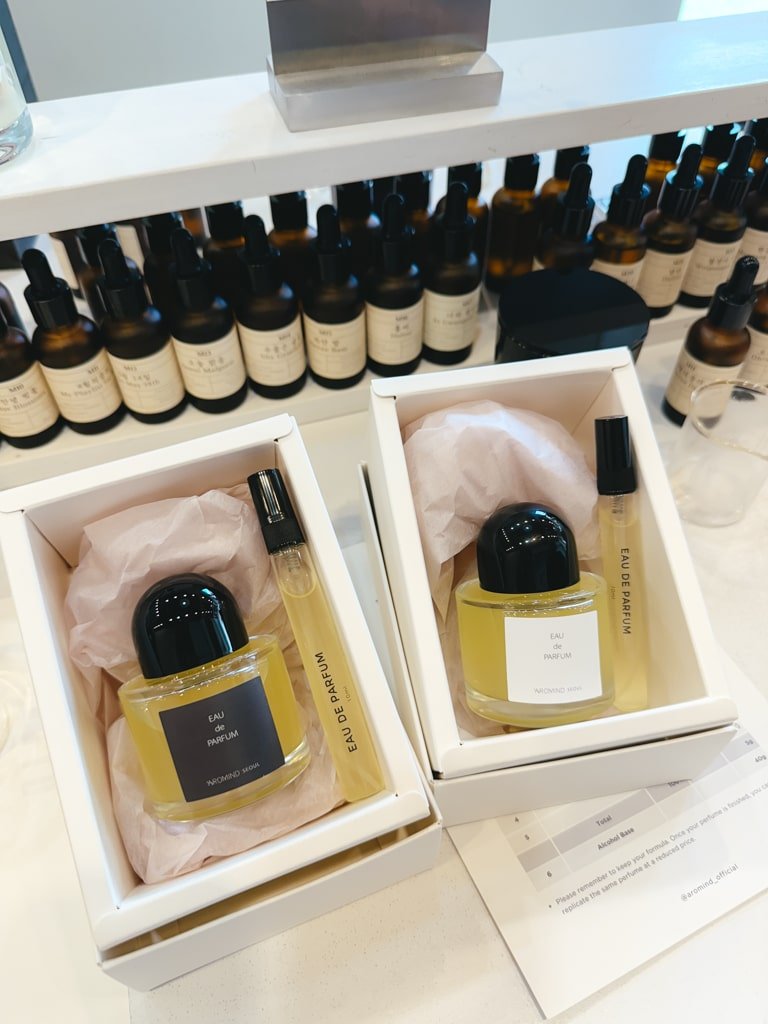
What You Leave With
- A 50ml bottle of your personal perfume
- A mini tester spray (perfect for your bag)
- The worksheet and scent profile you created, in case you want to reorder later
Everything comes packaged beautifully, and yes — the 50ml size is fine for carry-on travel.
Final Thoughts
I walked away with a perfume that genuinely makes me happy. It somehow smells like Korea — nostalgic, rich, and layered in a way I didn’t expect. I also left with a new appreciation for scent, for natural oils, and for how personal fragrance can be.
If you’re visiting Seoul and want a slow, creative, and scent-filled memory, this is 100% worth adding to your itinerary. You can book it here through GetYourGuide.
If you are travelling to Seoul and looking for more fun things to do, make sure to read my experiences staying in a Buddhist temple, and book one of these cooking classes!
ESSENTIAL INFORMATION
Must Know When Visiting South Korea
- Emergency: Dial 112 for police and 119 for fire or ambulance services. These lines are available 24/7 and usually offer English-speaking support.
- Language: English is spoken in most tourist areas and by younger Koreans, though it’s less common in rural towns. It’s helpful to learn a few basic phrases like “Annyeonghaseyo” for hello, “Kamsahamnida” for thank you, and “Joesonghamnida” for sorry. For live translation help, download Papago (by Naver).
- Navigation: Google Maps and Apple Maps do not work reliably for directions in Korea. Instead, download Naver Map or KakaoMap. Both offer accurate public transport, driving, and walking directions, and have English-language support built in.
- Water: Tap water is safe to drink across South Korea, though many locals still prefer bottled or filtered water. Most hotels and guesthouses will either provide bottled water or have a filtered dispenser available.
- Driving: Cars drive on the right-hand side in Korea, and an International Driving Permit (IDP) is required for tourists. Most traffic signs are in both Korean and English, but city driving can be fast-paced and stressful, especially in Seoul. Book your rental car with Discover Cars for the best rates and comparisons across all major and local companies.
- Accommodation: Booking.com is the most convenient option for finding hotels, hostels, guesthouses, and traditional hanok stays across Korea. Many listings include free cancellation, no prepayment, and access to a reliable rewards system for frequent travelers.
- Islands: South Korea has several beautiful islands to explore, including Jeju, Ulleungdo, and Geoje. Jeju is best reached by domestic flight, while others require ferries from mainland ports. You can use 12Go Asia or check directly with ferry operators to plan your route.
- Activities: There’s no shortage of things to do in Korea, from exploring palaces, to color analysis experiences and traditional markets to joining food tours, hiking, or even staying overnight at a Buddhist temple. For hassle-free bookings with verified reviews, use Get Your Guide to arrange activities in advance.
- Public Transport: Korea’s public transportation is fast, efficient, and easy to use. Major cities like Seoul and Busan have extensive subway networks, while intercity travel is best done using KTX high-speed trains or long-distance buses. As soon as you arrive, get a T-money card for easy access to subways, buses, and even taxis. You can also purchase a SIM card and T-money package online or at the airport to stay connected and ready to travel from the moment you land.
- Domestic Airlines: Korean Air and Asiana Airlines are the main full-service carriers, while Jeju Air, T’way, and Air Seoul offer low-cost domestic flights. Jeju Air is a popular and budget-friendly option, especially for trips to Jeju Island. If you’re collecting points, Korean Air’s SkyPass is the most established loyalty program.
- Taxi: Instead of flagging taxis on the street, use the Kakao T app to book one. It’s reliable, easy to use, shows price estimates, and allows you to pay in-app. While many taxis now accept cards, it’s still a good idea to carry a bit of cash just in case.
- Culture: Korean culture emphasizes respect, quietness, and social harmony. It’s customary to remove your shoes when entering homes or traditional accommodations. Public transport tends to be quiet, and loud talking is generally discouraged. Shops and restaurants usually stay open late and operate seven days a week, but keep in mind that museums, palaces, and some attractions are often closed on Mondays. Major holidays like Chuseok or Lunar New Year (Seollal) are times when many Koreans travel, and during those days, transportation and services may be limited.
